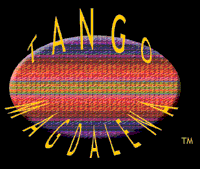The task of finding the right Tango teacher begins as the inviting door of discovery opens to the Tango student. Hopefully, this teacher makes the journey a pleasurable experience. The relationship is of huge importance. Just as in other relationships, trust is the key ingredient. The student will be guided by what he/she sees. No theory or claim would actually supplant the ability of the teacher to dance. The student should ask questions. Does the teacher have good posture and good balance; does she exhibit a refined sense of esthetics? Does the teacher project an ease in executing various figures or elements? Positive answers to these questions imply that the teacher was well trained and, therefore, could be trusted to pass on the information received.
At some point in the learning process, the student will encounter differences or nuances on a variety of points and subjects from other sources. In the world of Tango, this is predictable. Some instructors delve into the “teaching role” too soon and too carelessly before they themselves have gone through patient learning. The sudden explosion of Tango on the international scene has generated a lot of interest; therefore the temptation to teach is all too obvious. In addition, given that Tango is not a science, the terminology or the general lexicon is not always in perfect synch. Words are constantly created (justifiably so in may instances) to accommodate new discoveries and new techniques. The risk of confusion and misinformation significantly increases as weeks and months go by. What could aid in keeping the student grounded, focused and properly coached on this journey destined to last a lifetime?
Let me speak from personal experience. Once the student has found his/her teacher with the guidance of the criteria on the ability of such teacher to dance as I mentioned earlier, I would recommend staying with that teacher for a good amount of time (three to six months). Changing instructors early on could result in confusing directions. The foundation or technique is the first gem to acquire - good posture, balance, being on our axis and walking with ease. Proper foundation will guarantee smooth learning, as the thirst for more Tango moves is awakened. The same is true with the general Tango lexicon. I here assume that the teacher would be attached to the
roots of Tango and willcommunicate the importance of revealing the Argentinean culture with all its reality. This implies that the genesis of Tango is approached with sincerity in relationship with its African roots. The psychology of Tango itself will be better absorbed if understood in its historical perspective. Reading about the Argentinean culture and being curious about its foundation will undoubtedly help.
By the time the student checks the scene for additional instruction, he/she should be in the position to absorb any new information from other teachers and easily adapt it to the acquired knowledge. At this stage, no new information shall destroy the basic technique of walking, balance or good posture. A student’s natural common sense will arise as new Tango experiences open the mind’s windows to different perspectives. Many figures will be taught. They will all be pretty and attractive for the simple reason that they were put together by those who had the patience and stamina to acquire the know-how. In fact, the goal of any teacher should be to take the student to that place where they too would be able to create their own figures and combinations.
On the other hand, improper technique will - little by little - put the student in the league of mediocre dancers, confiscating the ability to comprehend figures or moves, let alone creating or inventing them. Tango’s beauty of flow resides in the clear understanding of the basic geometry of the dance. This geometry is part and parcel of the basic technique of the foundation. To learn properly is to give oneself the life-long fun of dancing Tango. The Tango Masters always state that “each Tango dance is different”. It is true. But it is only true if one has entered the league of the kind of dancers who are capable of invention and innovation.
Good dancers will always have a specific touch or note that makes them look different. However, they will all share something in common: Good posture, balance and elegance. These are the fruits of their diligent learning from a strong foundation right when they started. It is a painful experience to go back and unlearn or undo bad habits. I have seen it in other people’s misfortune. I was lucky to find good instruction from the start. Later on, learning from a variety of teachers just made my personal sailing a continuous pleasure. This is my wish for every student embarking on Tango’s fantastic journey. May your Tango embrace come from the place of gathering. |


